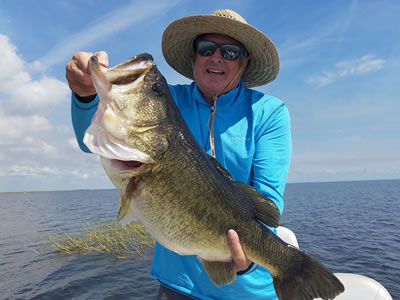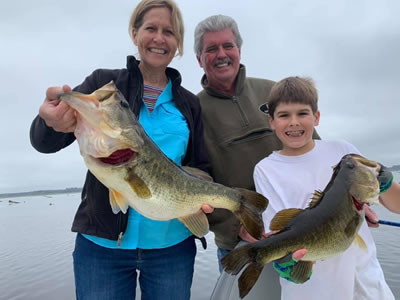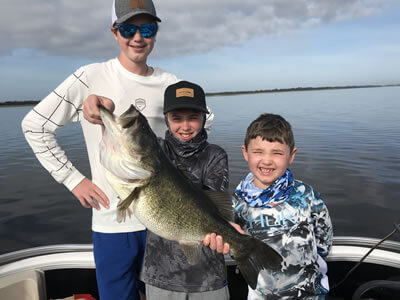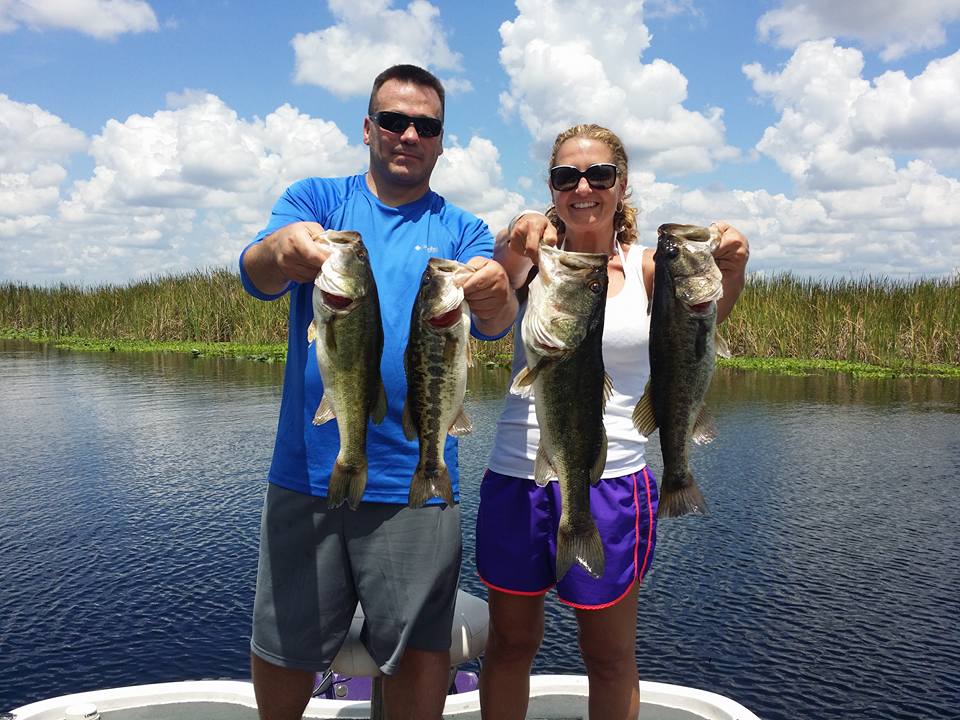Freshwater Snook
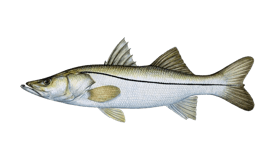
centropomus undecimalis
Other Names: sergeant fish, robalo
Description:
There are five different species of snook fish in Florida, all of which can be found in brackish and freshwater. The five snook species are the common snook, large-scaled fat snook, small-scaled fat snook, tarpon snook, and sword spine snook. Some snook species prefer waters with less salinity, such as the sword spine snook.
The common snook (Centropomus undecimalis) is the most abundant of the snook species and the one most people think of.
Snook used not to be seen much in the panhandle or anywhere above Jacksonville except in the hottest summer months, but these days snook can be found just about anywhere. They also seem to be getting more tolerant to cold water temperatures, which may be the reason for their spread.
Snook are a favorite fish among many anglers responsible for bringing millions of dollars to the Florida economy. Because of fishermen coming from around the world to catch snook. Catching snook is fun since they are known for their hard runs. Head shakes, but they also have a delicious taste. In addition, the common snook is known as the best inshore fighter in the world. This is why anglers travel to catch this active fish.
Most snook retreat into freshwater canals or brackish rivers in winter to survive the coldest months. This is because snook can’t handle water temperatures below 60 degrees for very long. The darker-colored freshwater will absorb the winter’s sun’s heat energy better than the clear water from the Gulf or the Atlantic Ocean.
Appearance of Common Snook
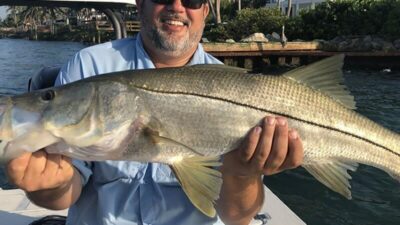
Range
The common snook is found in South Florida in coastal waters from about Cape Canaveral on the east coast. To around the Florida peninsula, to near Tarpon Springs on the west coast. They aren’t in significant numbers in northern Florida or the panhandle, but they are there.
Habitat
Snook mostly live inshore in the coastal waters, especially around mangrove shorelines, beaches, seagrass beds, and nearby structures. Freshwater snook will live in any freshwater or lightly brackish waterway they find and often congregate near spillways. Freshwater snook is commonly found in even the most minor residential canals throughout Florida.
All species of snook can live in freshwater; even large snook are found in freshwater canals throughout Florida. Some 40-inch plus big snooks inhabit water that is 100% fresh.
They are in southern freshwater rivers over 20 miles from the Gulf Coast or Atlantic coast in Florida. There are even some snook species as far inland as Lake Okeechobee.
Globally, snook occurs anywhere from South Carolina to Brazil, which includes Florida to Texas along the Gulf of Mexico. Regardless of the location, they can live in almost any habitat as long as it has good water quality and temperatures above 60 degrees Fahrenheit since they are sensitive to cold temperatures.
Age and Growth
The common snook can grow much more significantly than other snook species reaching up to 48 inches or 50 pounds. It’s the largest of the species that live in the Atlantic. Snooks grow faster and are generally larger in Atlantic waters compared to the Gulf of Mexico.
Behavior and Spawning
Freshwater snook start life as males, then when they reach 18 and 22 inches long, some become females. They form school during the spawning season and can often be seen cruising the South Florida beaches close to the shoreline during the summer. Snook congregates in large schools yearly in deep passes and inlets to spawn.
Feeding Habits
Freshwater snook primarily feeds on other fish and large crustaceans.
Freshwater Snook Species
Every snook species and size can be found in freshwater or brackish environments on Florida’s east and west coasts. The largest and most known is the common snook; the sword spine snook is the smallest species and is most known for its strong preference for freshwater or lightly brackish areas.
The sword spine snook has an anal fin that reaches its tail, which is the main distinction between them and their relatives. They are also tiny, with a large one reaching up to 15 to 16 inches but most stay under 10 inches in total length. Swordspine snook also has larger scales compared to other snook species.
The sword spine snook would live in freshwater permanently if they could. They prefer waters that are entirely freshwater or slightly brackish. The sword spine snook will avoid entirely saltwater bodies of water.
The sword spine snook is the smallest of the Florida snook species, and they thrive within the mangrove roots and brackish estuaries that are fresh enough for their liking but too salty for largemouth bass to thrive in.
Snook Fishing
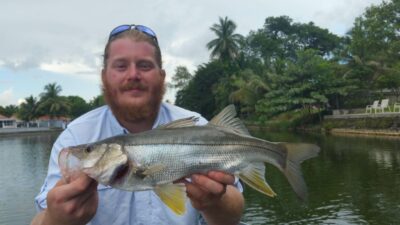
Many common snooks will run into Florida rivers or canals to find warm water. They eat like largemouth bass and snakehead, feeding on bluegill, crawfish, frogs, small mullet, snakes, ducks, and baby alligators.
If anglers are looking for saltwater snook in the winter, they will usually have to look deeper and further out in inlets, bridge pilings, or offshore wrecks.
Saltwater and freshwater snook will orient themselves to face moving water and wait for prey to be carried by the current to ambush. Then, this acrobatic fish will jump clear above the water, similar to tarpon, and burst into hard and long runs once hooked.
It’s not uncommon for Florida anglers to land the ultimate freshwater grand slam of largemouth bass, peacock bass, and snook in one trip.
Fishing Tips
Anglers often have the best luck catching snook with live pinfish, mullet, or live shrimp. Other effective methods are free-lined sardines, which can be fished off the bottom with a fish finder. Most shrimp or baitfish baits will work throughout the year, but it could be helpful to adjust your tactics based on the season.
This famous Florida fish will mainly feed on shrimp, bivalves, and mud crabs during the summer. During the fall, freshwater snook feeds primarily on pinfish and shrimp. They will feed mainly on mud crabs, snapping shrimps, and worm-like invertebrates during the winter.
Also, contrary to what many anglers believe, your baitfish or shrimp doesn’t have to be significant to catch a big snook. Even large snook have been caught on the smallest baits if cast in the right spot.
Snook fishing is the ultimate Florida fishing experience and is best in the shallow waters near grass flats, mangroves, oyster bars, or beautiful urban canals.
Edibility
Freshwater snook meat is white with medium firmness and best eaten fresh, like most seafood. Snook meat isn’t as delicate as trout meat but isn’t as dense as swordfish meat.
Records
The Florida state record is 44 pounds 3 ounces caught in Ft. Myers. The fly-caught record is 30 pounds, 4 ounces.
The IGFA world record is 53-pound 10-ounces caught in Parismina Ranch, Costa Rica.

